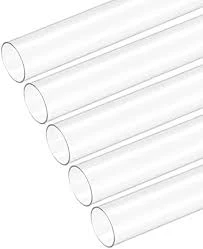Dec . 05, 2024 15:29 Back to list
pvc plate
Understanding PVC Plates A Versatile Material for Various Applications
Polyvinyl chloride (PVC) is one of the most widely used synthetic plastic polymers in the world. Among its various forms, PVC plates have gained significant popularity in multiple industries due to their versatility, durability, and cost-effectiveness. This article aims to explore the characteristics, applications, and benefits of PVC plates, shedding light on why they are increasingly favored for a diverse range of uses.
Characteristics of PVC Plates
PVC plates are produced from the polymerization of vinyl chloride monomers, leading to a material that is both lightweight and robust. The key characteristics of PVC plates include
1. Durability PVC plates are resistant to moisture, chemicals, and UV light, making them suitable for outdoor and industrial applications. They do not rot, fade, or degrade easily, providing longevity in various environments.
2. Customization Available in various thicknesses, sizes, and colors, PVC plates can be customized to meet specific requirements. This adaptability makes them a preferred choice in many sectors, from construction to craft.
3. Ease of Fabrication PVC can be cut, drilled, and formed easily, enabling manufacturers to create components and products with precision. This property allows for rapid prototyping and significant time savings during production.
4. Lightweight Despite their strength, PVC plates are lightweight, making them easy to handle and transport. This characteristic is particularly beneficial in applications where weight reduction is essential.
5. Cost-Effective Compared to other materials such as wood, metal, or glass, PVC plates offer a more economical solution. Their low manufacturing costs and long lifespan translate to savings in both material costs and maintenance.
Applications of PVC Plates
Given their diverse range of beneficial properties, PVC plates find utility in several industries
1. Construction In the construction sector, PVC plates are used for cladding, insulation, and window frames. Their resistance to water and chemicals makes them ideal for use in bathrooms, kitchens, and outdoor settings.
pvc plate

2. Signage and Display PVC plates are commonly used in signage due to their smooth surface, which can be easily printed on. Whether for retail signage, exhibition displays, or promotional materials, PVC plates offer an excellent substrate that enhances visual appeal.
3. Packaging The packaging industry has embraced PVC plates for producing containers, lids, and other packaging solutions. Their clarity, durability, and ability to be molded into intricate shapes make them suitable for protecting food and consumer products.
4. Crafts and Model Making Hobbyists and professionals alike utilize PVC plates in crafts and model making. Their lightweight nature and ease of cutting allow for the creation of intricate designs and detailed models.
5. Automotive and Marine Industries In the automotive and marine sectors, PVC plates are used for interior panels, dashboards, and boat components. Their resistance to corrosion and water enhances safety and longevity in these applications.
Benefits of Using PVC Plates
The benefits of incorporating PVC plates into projects are numerous
1. Environmental Impact Although PVC has garnered attention for its environmental implications, advancements in recycling technologies and the ability to produce more sustainable forms of PVC contribute to a more eco-friendly profile.
2. Safety PVC plates can be engineered to be fire-retardant, enhancing safety in construction and manufacturing applications where flammability is a concern.
3. Minimal Maintenance Due to their resistance to wear, mold, and corrosion, PVC plates require minimal maintenance compared to other materials, providing peace of mind for users.
4. Aesthetic Versatility With a wide array of colors and finishes available, PVC plates can be tailored to suit any design preference, making them ideal for both functional and decorative uses.
Conclusion
PVC plates exemplify the power of modern materials in addressing varied industrial and consumer needs. Their unique combination of durability, versatility, and affordability not only revolutionizes how we approach construction, art, and design, but they also pave the way for innovative applications across multiple sectors. As industries continue to evolve, PVC plates will undoubtedly remain a staple in the material arsenal, catering to the demands of a dynamic marketplace. Whether you’re a builder, designer, or hobbyist, understanding and utilizing PVC plates could enhance your projects and drive efficiency while ensuring quality and sustainability.
-
Premium HDPE Water Supply Pipes: Durable & Leak-Proof
NewsAug.03,2025
-
Premium PVC-M Water Supply Pipe - Durable & Efficient
NewsAug.02,2025
-
Premium PP Welding Rod: GPT-4 Turbo Enhanced
NewsAug.01,2025
-
HDPE Drainage & Irrigation Pipe - Durable, Efficient Solutions
NewsAug.01,2025
-
Premium PVC Transparent Pipe: Durable & Clear Solutions
NewsJul.31,2025
-
High-Quality UPVC Electrical Pipe for Safe Wiring Solutions
NewsJul.30,2025

